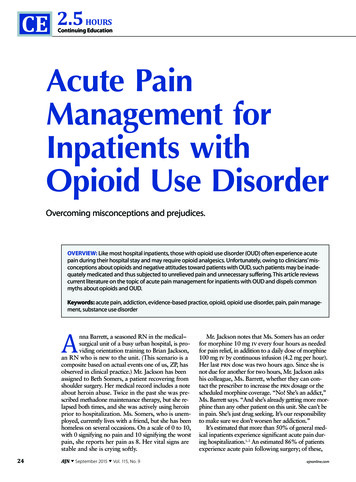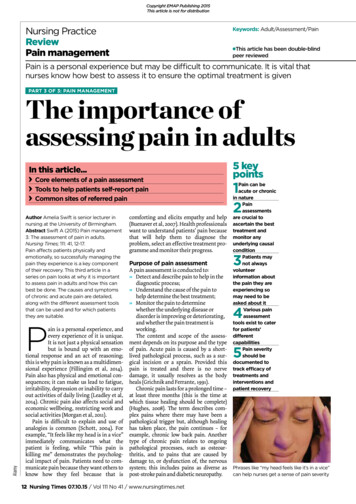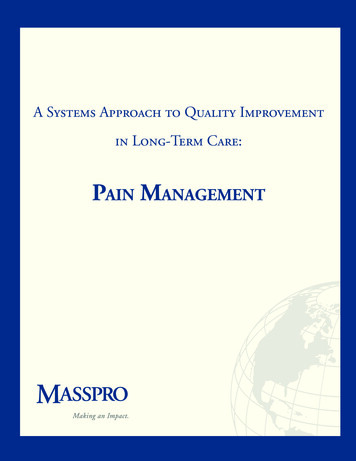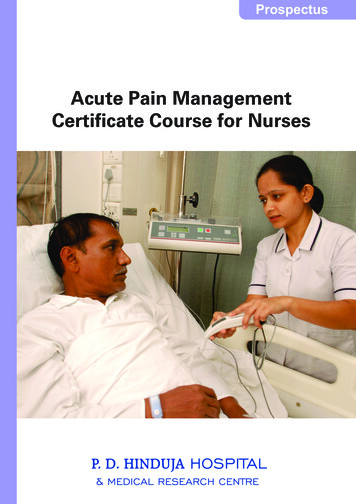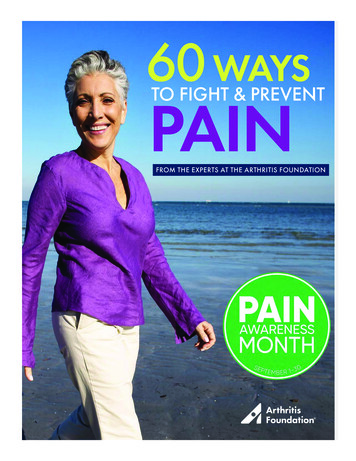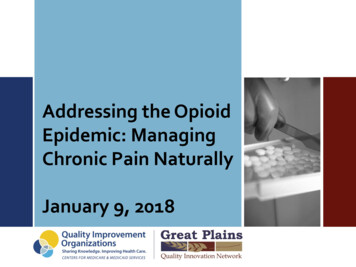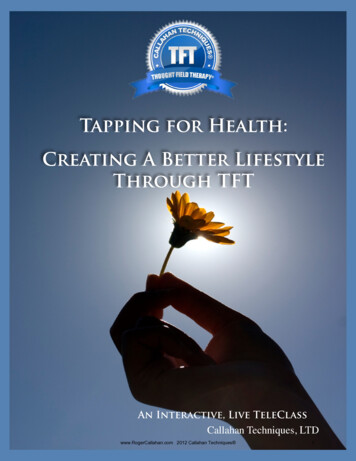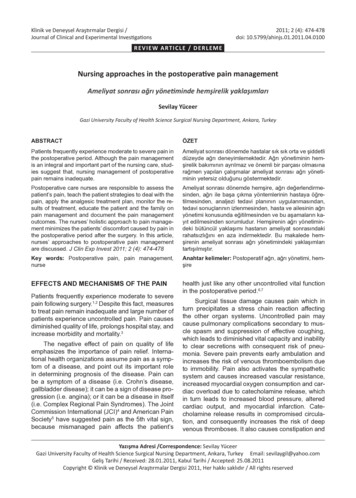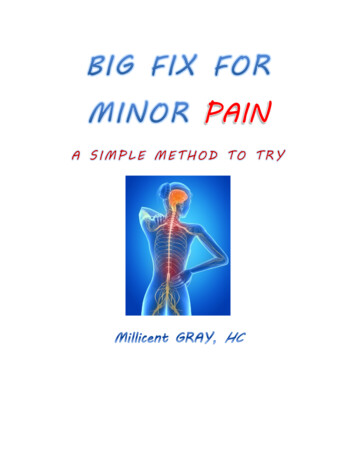
Transcription
I have redesigned thisgift/brochure: the simpleapproach to dealing withincidental pain, for sharing withothers. If it helps you, pleaseconsider copying it out andsharing it with friends and familymembers who are experiencing discomfort from the aches and painsthat result from daily living.Who among us does not encounter incidental pain in the course of ourlives? Possibly no one. It is a fact of life, and a common experiencefor all of us. I also deal with my own non-life-threatening incidentaland chronic pain. Here is a method that I have found works for me—perhaps it might for you too.Dealing with chronic and incidental painhas become a hot item in our culture.Many people rely on over-the-counternon-steroidal anti-inflammatory drugs,(NASAIDS) such as aspirin, ibuprofen,naproxen and others for relief fromminor or persistent pain. However,these drugs can cause undesired side effects.2
There are numerous clinics and practitioners that specialize in painmanagement. Do their methods always work? In my experience,whether they do or not depends on the individual practitioner and theindividual patient. Often, even if you believe something is helpingyou, it actually is. (More about the brain below.) Just like anyother aspect of healthy living, what healing method “works” for onemight not work for another. We are, after all, unique individuals andthe “one size fits all” mold cannot really apply. (More and more,this concept is being discovered and accepted in the health-servicesworld.)A word of caution here: your first step is to please ALWAYS checkwith a health professional or doctor to determine what is CAUSINGthe pain, which is there to let you know that something is not rightwith that part of the body. Finding a REASON for the pain is veryimportant.3
The method I am about to explain here, that works for me, is basedon the works of John Sarno (www.healingbackpain.com), author ofmany books dealing with the control of back and other pain. I haveadopted a working method from something he said in his book, TheMindbody Prescription: Healing the Body, Healing the Pain. Thismethod works for me to lessen or actually stop incidental pain,including headache. Mine is a shortcut version distilled from readinghis works which are complex and fascinating. (For more informationon his findings, I recommend reading one or more of his books.)One of Dr. Sarno’s findings is that pain can be caused by lack ofoxygen in the area of the pain. Described below is a simple way ofgetting blood into a painful body part which will enhance oxygen flowto the area.For right now, consider this: manyof us have been told to take a hotshower when experiencing aches andpains, or to apply a heating pad orother heating device to the area.What the heat does is to encourageblood to rush to the area, bringing,of course, the oxygen that is in theblood.4
By the way, paying attention to yourbreathing and taking DEEP BREATHS fromtime to time during the day is verybeneficial (we often breathe shallowly whenoccupied with something or just sittingdoing whatever). Naturally, this will aid inthe overall oxygenation of the blood for application to those sorespots.“But”, you say, “I am on the road, or in an airplane, or am lying inbed. I don’t have access to hot showers or heating pads just now”.Well, this is where the beauty of this method lies. Read on.Here I would like to stress the individual’s POWER OF THE BRAINand the brain’s ability to work with the body in healing.5
In fact, the brain controls pretty much ALL of what goes on in ourbodies, either automatically or because of our actual thinking MIND.We can work to use our minds to direct the activities of our bodies—think BIOFEEDBACK, which is medically accepted. It is this abilitythat powers the pain abatement process.The practice is so simple, that it almost seems laughable. Yet if itcan work for me, perhaps it can useful for others—maybe even YOU!Okay, so you have a pain, perhaps in your neck from sitting in oneposition for too long, or when you lie down to sleep. Here is whatyou do:TELL YOUR BRAIN TO TELL THE HEART TO SEND BLOOD TO THEPAINFUL AREA. BE SPECIFIC. LOCATE THE PAIN BY BRAIN GPS,OR YOU CAN ACTUALLY PLACE YOUR HAND ON THE AREA TOGUIDE THE BLOOD THERE.6
For instance, say firmly, “Brain, I want you to tell heart to sendblood to the right side of the back of my neck and to the upper rightshoulder blade”. Or, “Brain, I want you to tell heart to send bloodto my lower back”. Then wait for it to happen. BE PERSISTENT.Be firm. If you notice the pain continuing, repeat your directive. Itmight happen quite soon, it may take a while. Sometimes I canactually FEEL the blood rushing to the area. After some time haspassed, you may suddenly think, “Wow, there is no more pain”, andyou will know that the method worked. Be sure to thank your brainand your heart for doing this.I have even had temporary success with an area of chronic pain in myforearm—probably from over-doing the weights in the past. When itflares up, I just say, “Send blood”, and think of where I want theblood to be sent.It is that simple. Your choice. Give it a try.7
But always remember, it is your responsibility that if you don’t knowthe source of the pain, or it remains persistent, to seek medical helpfor sure.Source:Sarno, John E. The Mindbody Prescription: Healing the Body,Healing the Pain. New York, NY: Warner, 1998. Print.8
on the works of John Sarno (www.healingbackpain.com), author of many books dealing with the control of back and other pain. I have adopted a working method from something he said in his book, The Mindbody Prescription: Healing the Body, Healing the Pain. This method works for me to lessen or actually s



